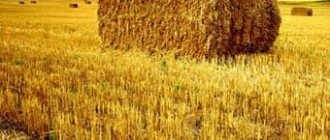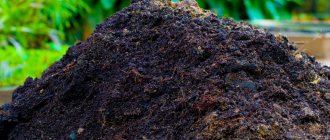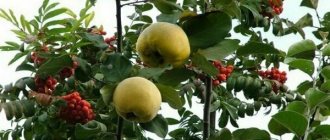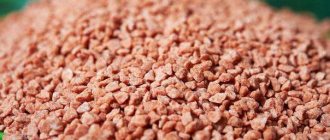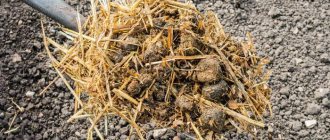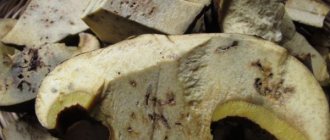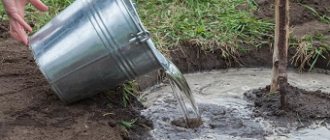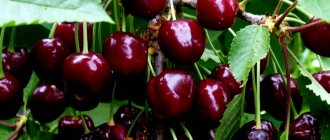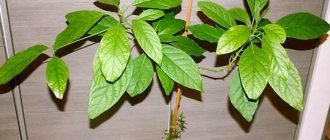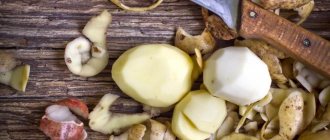Pork is the main ingredient in many cuisines around the world, so pigs are raised not only on specialized farms, but also in many households.
However, a pig is a source of not only meat, but also manure, which, when used correctly, is a good natural fertilizer that improves soil structure and accelerates plant development.
Therefore, all pig owners need to understand :
- what properties do their excrement have?
- how to turn their manure into fertilizer;
- what properties does humus from pig excrement have?
- how to use it correctly, for the benefit of the garden, and so that the manure does not harm the plants and soil.
Is it possible to use pig manure in the garden, and is it useful?
Fresh pig manure is a very aggressive substance towards plants , so it cannot be used as a fertilizer until it rots.
However, humus-forming bacteria, which are the main participants in the process of decomposition, break down aggressive substances, obtaining nutrition from them, after which they secrete humic acids, which form humus (humus).
After rotting, pig excrement turns into a good complex fertilizer, replenishing the humic acids spent on plant development and filling the soil with various microelements, without which the growth and fruiting of crops is impossible.
In addition, fresh pig excrement contains :
- pathogens of various diseases, including those dangerous to humans;
- eggs of helminths (worms), dangerous to people and animals;
- seeds of various weeds.
The only way to completely get rid of these dangers is rotting, because bacteria secrete enzymes that break down any complex organic matter, which leads to the death of parasites.
Varieties
Pig manure as fertilizer is used in different ways: it is rarely used fresh, but it is also used. Mainly rotted substrate and humus. For the safety of plants, it is better to compost it or keep it well in a dense pile.
Fresh pig excrement
If you plan to give the bed a rest, then fresh excrement can be introduced in the fall. Provided that next year nothing will grow there.
The soil will simply receive the necessary organic matter, and soil microorganisms will process it over the winter and spring of next year. You need to know that the acidity of the soil will temporarily increase - plants that prefer slightly acidic or neutral soil will not like this.
An exception would be alkaline soils into which a lot of lime, dolomite or phosphate rock was mistakenly added. In such cases, you can safely add pork excrement - the balance of nutrients will be restored.
Rotted substrate
This is a substance mixed with straw that has been stored for at least a year. It is more pleasant to the nose and you can work with it without a respirator. The amount of free ammonia has decreased to a safe level and is added in spring and autumn.
In the fall - after harvesting for digging, in the spring - 3 weeks before planting, also for digging. Pig manure needs to be given more time to decompose because it takes longer to be broken down by bacteria and the nutrients are released slowly.
Humus
Pig manure is used as a fertilizer, soil loosener and organic amendment. The amount of nitrogen in it is reduced by 75% compared to fresh. In appearance, it is a dry substance in which straw remains cannot be distinguished. Suitable for fertilizing the soil and mulching berry bushes. Completely safe for plant roots.
Video: Manure - preparation before application
To increase the nutritional value, mineral fertilizers are added to the humus - potassium sulfate, calcium sulfate and superphosphate. They also use urea, but in a reduced dosage - only to feed the plants with nitrogen.
Chemical composition and characteristics of the material
Since manure is formed as a result of the digestion of food, it contains the original or modified substances present in the feed that animals eat.
Approximately a quarter of the mass of fresh excrement is organic matter obtained by processing starch and cellulose enzymes.
About 70% of the mass of fresh excrement is water, its amount depends on factors such as:
- pigsty design (in rooms equipped with a urine drainage system, the humidity of the manure is lower);
- method of removing excrement (when cleaning using the scraper method or manually, the humidity is noticeably lower than during flush cleaning);
- the presence or absence of litter, which absorbs moisture and reduces the moisture content of excrement.
In addition, pig excrement contains much more ammonia nitrogen , which is one of the reasons for its high toxicity.
Like the excrement of other animals and birds, pig manure contains phosphorus in the form of P2O5 oxide, but its amount is very small and amounts to approximately 0.2% of the mass of fresh feces. The amount of calcium in the form of lime (CaO) is also less than in other types and is about 0.18%.
There are also other chemical elements present in pig excrement that are characteristic of any waste of animals or birds, but their amount does not exceed tenths and hundredths of a percent.
Recycling of pig feces
Conventional excrement processing can be carried out in separate rooms - manure storage facilities. There are special lagoons for pig feces. After introducing excrement, bacteria begin to decompose it. Pork manure is processed in three ways: loose, loose-dense, dense.
The first method involves maximum compression of feces, displacing air and moisture. This method preserves the greatest amount of nitrogen, but it takes a long time. The most popular is the loose-dense method. Feces are placed quite freely, and the bacteria in them quickly decompose the fertilizer.
Another method of processing is the addition of special microbiological preparations to feces. This method takes the least time. To implement this, excrement is laid out in layers, mixed with bedding straw. Next, preparations containing bacteria are added. They kill pathogenic flora and make the fertilizer safe for use.
How and for what can it be used?
Pig excrement is used for:
- heating beds in greenhouses, greenhouses or vegetable gardens;
- mulching;
- restoration of soil structure;
- replenishment of nutrients and microelements spent on plant development.
Heating beds
To warm the beds before planting seeds or seedlings, first remove the fertile layer of soil, then dig a trench to lay pig manure.
It is advisable to insulate the walls of the trench with dry manure, compressed hay or any other organic material.
This will reduce heat loss, because the soil temperature in winter rarely exceeds +5 degrees, and for normal rotting in excrement a temperature of +45 degrees is required .
If the walls are well insulated, then the heat released by humus-forming bacteria is enough to heat the material to the required temperature. We described the sequence of actions in more detail here.
Mulching
For mulching, ready-made humus is used, the methods of obtaining which we talked about here (humus).
You can mulch at any time of the year, but mulch made from hog manure is less effective than mulch made from other animal excrement , as well as crushed plant debris such as sawdust or shavings.
We described mulching with animal excrement in detail in this article, so follow the recommendations regarding humus outlined there.
Restoration and improvement of soil structure
To restore and improve the structure of the soil, humus from bedding material is best suited, because straw or chopped wood in it has a much larger fraction than digested food.
And the larger (up to a certain limit) the size of the solid elements in excrement, the better such humus loosens the soil , increasing its ability to pass and absorb moisture.
Therefore, humus is spread across the field, then plowed or manually dug up to mix the soil with humus.
This operation is best performed before spring plowing, due to which the soil will be better prepared to accept seeds or seedlings, but it can also be carried out in the fall.
Nutrient Replenishment
To replenish lost nutrients and microelements, humus is applied in the fall before plowing or digging up the site .
After cultivating the soil with a plow or shovel, humus will mix with the soil and not only restore its structure, but also fill it with nutrients, so that by next spring the soil will be completely ready to receive plants.
If this work did not work out in the fall or winter, then you can spread humus around the trunks of plants throughout the year, so that during watering it will mix with the soil and also fill it with nutrients.
This will increase the amount of nutrients available to the roots, and therefore speed up the development of the plant.
And a little about the author’s secrets
Have you ever experienced unbearable joint pain? And you know firsthand what it is:
- inability to move easily and comfortably;
- discomfort when going up and down stairs;
- unpleasant crunching, clicking not of your own accord;
- pain during or after exercise;
- inflammation in the joints and swelling;
- causeless and sometimes unbearable aching pain in the joints...
Now answer the question: are you satisfied with this? Can such pain be tolerated? How much money have you already “wasted” on ineffective treatment? That's right - it's time to end this! Do you agree? That is why we decided to publish an exclusive interview with Oleg Gazmanov, in which he revealed the secrets of getting rid of joint pain, arthritis and arthrosis.
Attention, TODAY only!
Pros and cons of using
Compared to the excrement of other domestic animals or birds, pig droppings do not have any advantages, but they have several significant disadvantages, because they contain :
- helminth eggs, which pose a much higher danger to humans;
- pathogens that are much more dangerous to people;
- less beneficial mineral compounds and more harmful nitrogen in the form of ammonia.
And compared to mineral fertilizers, it has several advantages :
- in places where pigs are raised it can be purchased free of charge;
- after rotting it turns into a universal fertilizer;
- in combination with a bedding of any chopped wood or grass, it loosens the soil well.
However, in terms of its influence on plant development, it is much inferior to both the excrement of other animals/birds and modern mineral and complex fertilizers.
Therefore, it is advisable to use pig manure as fertilizer only when it is available for free, or you are raising pigs, and there is nowhere else to put the manure.
Why you need to recycle pig feces
How is pig manure processed?
Pig excrement is not yet a complete fertilizer. In addition to useful substances, it contains:
- harmful bacteria that are dangerous to humans;
- fungi and putrefactive bacteria that can damage garden crops;
- weed seeds that will germinate as soon as they fall into the soil;
- residues of drugs used to keep animals;
- worm eggs that persist in the soil for up to 5 years;
- high ammonia content, which can damage plants.
Reviews
The most reliable reviews about whether it is possible to use pig manure in the garden, whether it is useful for plants and how, as well as how to use it as a fertilizer, can only be found on thematic forums where the use of this material is discussed.
Therefore, we have prepared a small list of such forums :
- Mastergrad;
- Farmer Ru;
- Our Dacha;
- Miracle garden;
- Portal Russian Summer Resident;
- Village Online;
- Farmer portal.
Benefits and harms in the garden
Pig manure for the garden is used less often than other types of fertilizer due to obvious disadvantages:
- high acidity - the ability to damage healthy soil;
- pungent, unpleasant odor;
- long decomposition;
- the need to take into account the maturation stage when introducing into land structures;
- insufficient heat generation.
However, pork humus as a fertilizer has advantages, which include:
- suitability for any beds and different types of plants;
- natural composition;
- possibility of separate or complex use (manure mixtures);
- increase in quality and abundance of nutrients as it matures;
- increasing fertility.
When should fertilizer not be used?
To prevent plants and soil from being damaged, several factors are taken into account:
- Pork humus has a beneficial effect on plant organisms and takes about 2 years to decompose. To avoid negative effects, fresh, semi-rotted and rotted pig manure should not be applied due to excessive nitrogen saturation.
- It is prohibited to introduce pig waste as fertilizer before planting. The rational, most suitable period for feeding with humus is autumn.
Pig manure, used as fertilizer, cannot be used as mulch in the garden: it will burn the root system of fruit crops.
When should fertilizer not be used?
Unrotted manure contains high levels of nitrogen, which can burn plants or simply saturate them, creating a human health hazard. Applying fresh product to the soil will not have a good effect because the nitrogen will evaporate.
This is interesting: Description and characteristics of the apple tree variety Glory to the winners, cultivation and care
If you want to act correctly, then apply pork fertilizer during the autumn digging - humus or rotted fertilizer that has been aged for at least a year.
How to properly store manure
It is not always possible to use all the manure at once or to quickly obtain it. Many summer residents do not have time to use manure during the season and therefore leave it for storage. But, unfortunately, they do it wrong. For example, small piles are simply left in the open air. But in this case, the nitrogen is washed away by rain, and the pile itself is eroded. But there are at least three ways to store manure.
- Hot (loose) storage method according to Kranz - with this method, loose and unrotted manure is placed in insulated piles up to 3 m wide and up to 1 m high and left in this form for several days. When the manure is compacted, the next layer is laid on top. In cold weather, manure is covered with plywood or straw to avoid heat loss. After 3-4 months, a stack of manure 3 m high turns into neat and odorless humus.
- Hot pressed method. Manure is laid in layers of 80-100 cm, sequentially compacting each layer and maintaining the temperature in the stack at 55-60°C. The total number of layers should be about three to four, and the height of the compressed material should exceed 2 m.
- Cold method. When using this method, moistened manure is densely stacked daily in piles at least 5 m wide and up to 2 m high. Under no circumstances should it dry out, since then instead of bacteria, fungi develop that absorb nitrogen.
The easiest way to store manure during the season is under a canopy.
Now you know everything about manure, you know how to choose the most suitable type for different purposes, properly dilute it and apply it, and also store it. Despite the fact that the use of manure is considered the most “ancient” way of feeding plants, a better and more natural fertilizer has not yet been invented.
Fertilizer of agricultural crops
Many farmers do not know what to do with manure and humus. It is used for soil so that it acquires a neutral or slightly acidic pH, as well as for feeding plants. Almost all vegetable and fruit crops experience a nitrogen deficiency during the growth period.
Humus or compost must be added in the autumn when digging. It is advisable to use it for beets and potatoes. It is also used when planting cucumbers, tomatoes and corn. The solution must be poured into the interfluves. Watering is carried out in the spring.
After adding humus, some time must pass before decomposition. Plants on their own will not extract the necessary substances from the manure if it does not break down.
After applying fertilizer, the soil receives nitrogen, which is absorbed by the roots. If the dose is exceeded, the consequences will be the same as with an overdose of ammonium nitrate. Then the plant will not be suitable for food. Pig manure can be used, you just need to follow simple instructions and recommendations. Only then will it be possible to properly dispose of waste and increase the harvest.
Bought manure - sharpen the hoe
When planning to use the feces of livestock and poultry in the garden, it is worth remembering that these animals are mostly herbivores. When eating grass, they will not spit out the seeds, but will swallow them with great pleasure, without bothering to chew them. Having passed through the digestive tract of the animal and once again being free, the weed seeds continue their development cycle as if nothing had happened and immediately germinate.
Fresh manure is the reason for the appearance of numerous weeds on the site. Moreover, the gastric juice of animals acts as a kind of growth stimulator - it breaks down the seed coat, as a result of which they begin to grow much faster than usual. Therefore, adding manure to the soil often forces the gardener to take up the hoe more often and free the area from new green invaders.
Compost
The best fertilizing method is composted manure. In addition to being nutritious, such waste eliminates the unpleasant odor of excrement. Manure is laid in layers, then covered with straw, sawdust or leaves. The compost should be in contact with the ground. Additional organic matter makes the humus more nutritious.
It is necessary to prepare a pile and put leaves in it, leave all this for a year until the compost is ready. To avoid parasites and their eggs, the pile must be loose. This can be done by increasing the area or decreasing the height of the compost.
Pig manure with sawdust is used as fertilizer. Reviews confirm that the finished compost is free-flowing, dark, and has the smell of soil. If it smells rotten, then the waste has not rotted. This is due to lack of oxygen. You need to mix the pile or increase the area under it, then the smell will disappear.
Compost is added during spring digging by embedding into the soil. It should not be used as mulch. With the help of such processing, humus will allow the disposal of excrement and biological residues from the site. As a result, a complex fertilizer will be ready that will not lose its properties for about 3 years.
Manure as a source of infections
Veterinarians from one corner of the country or another are frightening us with the next epidemic that has destroyed the livestock or poultry population. The list could go on for a long time: tetanus, anthrax, salmonellosis, brucellosis, tuberculosis, infectious anemia, catarrh, glanders, plague, foot-and-mouth disease, erysipelas, etc. The causative agents of these infections are also present in the feces of sick or recovered animals. But even the feces of healthy livestock are often a source of infection, and helminthiasis comes first.
Infectious agents remain in the feces of sick animals
Microbes, getting from contaminated manure into the soil, can be transported over significant distances by insects and groundwater, causing new outbreaks of animal disease. Some of these infections are dangerous to humans.
